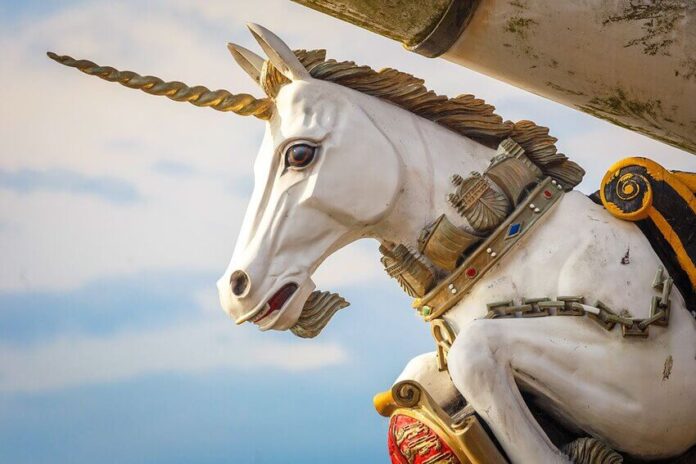Scotland is known for its love of stories, which range from gigantic water monsters to witches and ghosts. Yet, how did the mythical unicorn end up as Scotland’s national animal?
1. The national animal of Scotland is the unicorn, but why?
You might choose one or more of our recognizable wildlife species if we asked you, “What is Scotland’s national animal?” You probably wouldn’t picture a horned, mythical monster like the ones on kids’ lunchboxes!
Yet, it is accurate to say that Scotland’s official national animal is the unicorn. And we have long been devoted to this well-known mythical monster.
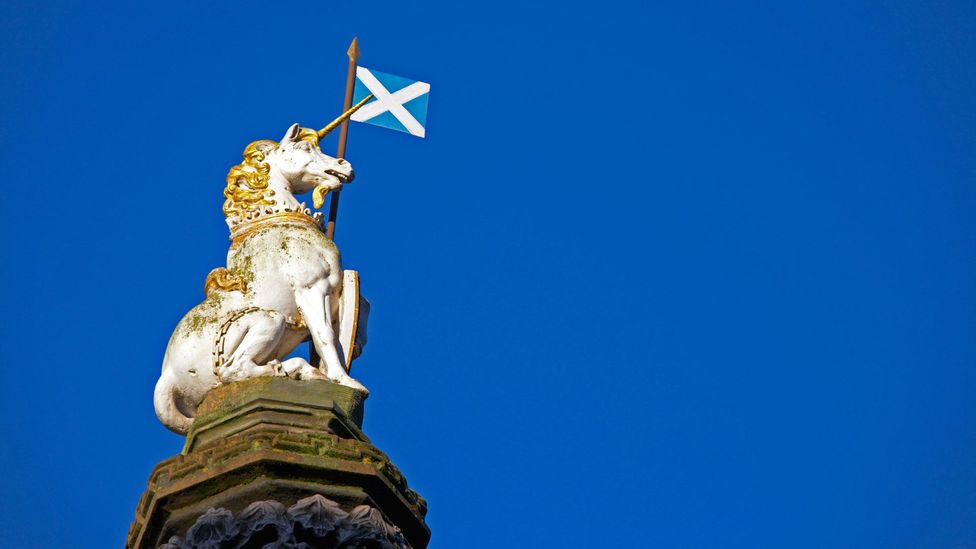
Throughout the classical era, numerous cultures have included unicorns, including the Indus civilization and ancient Babylonia. In Celtic mythology, the unicorn represents purity, innocence, and power with its white horse-like body and lone spiraling horn. According to legend, because of the intensity of their healing abilities, their horns can even cure poisoned water.
Anyone who has read about the history of these brave, untamed creatures in Scotland would be familiar with their fierce independence and reputation for being challenging to capture or subdue. Even though unicorns are fiction, Scots have always been attracted to what they stand for.
2. Scotland first used unicorns when?
The answer to that query is heraldry, the centuries-old practice of creating and displaying coats of arms or crests to distinguish between groups of people, armies, or institutions. We can infer from heraldry that the unicorn appeared for the first time in the Scottish royal coat of arms somewhere in the middle of the fifteenth century.
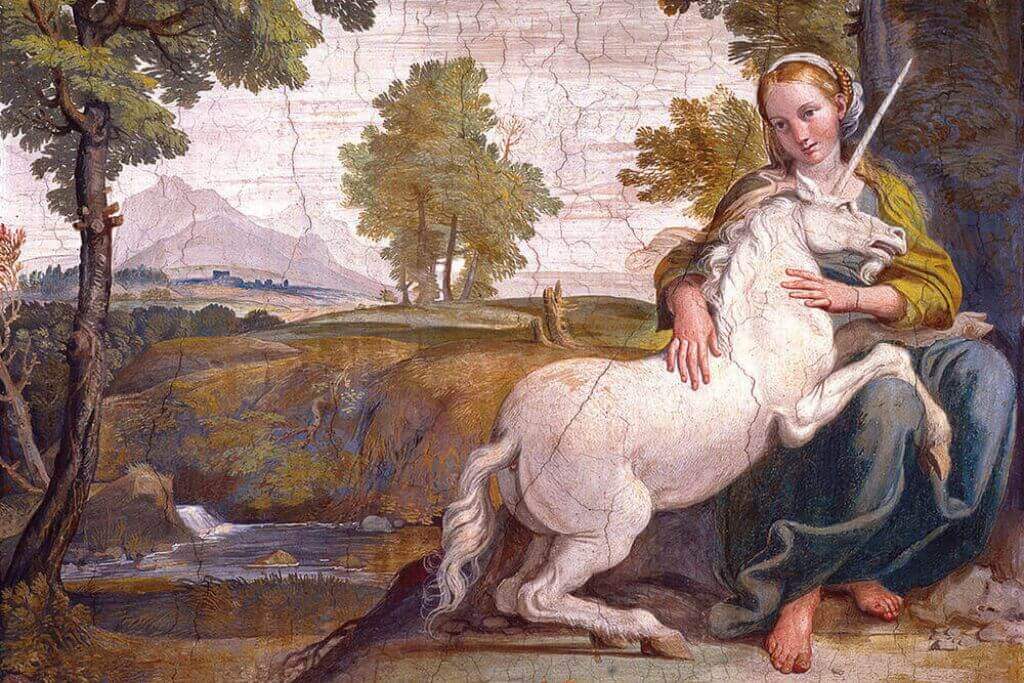
Our coat of arms was supported by two unicorns before the Union of the Crowns in 1603. King James VI of Scotland, who later became James I of England, swapped out one of the unicorns for a lion, England’s national animal, to show the two nations’ union. Folklore enthusiasts know that lions and unicorns have long been rivals and have engaged in conflict over who is the true “lord of beasts.”
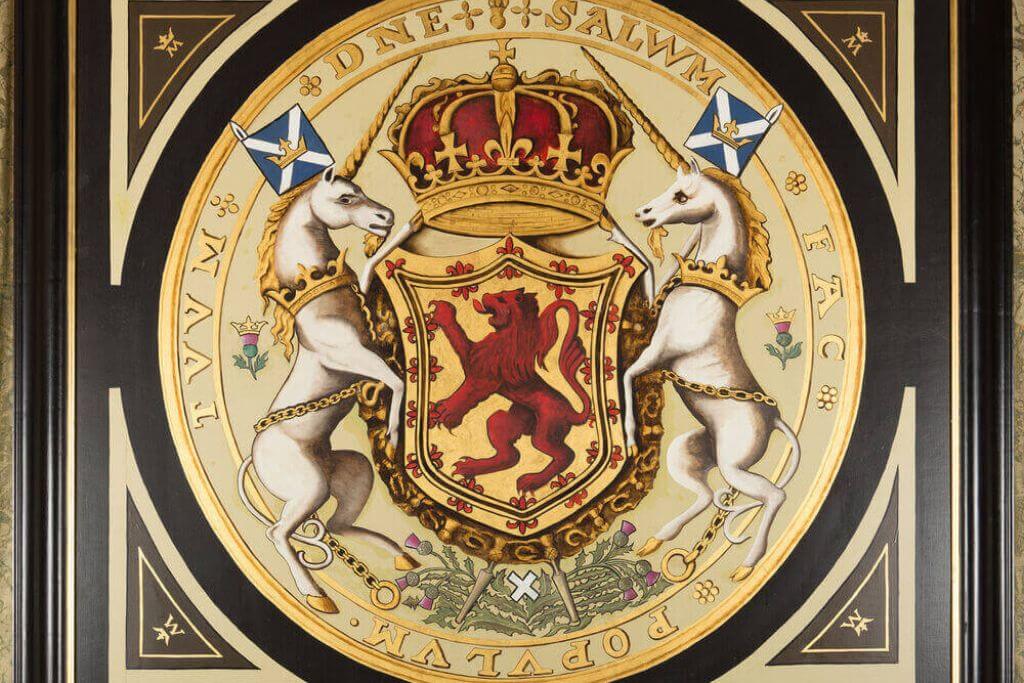
Notably, in Scottish heraldry, unicorns are consistently depicted with gold chains encircling them. Although we can’t be sure, it’s thought that this was a way for Scottish rulers to demonstrate their dominance by demonstrating that only they had the power to subdue the untamable.
3. Where in Scotland can you find unicorns?
People all throughout the world had the misconception that unicorns existed for thousands of years. However, a well-known French naturalist by the name of Georges Cuvier made an effort to disprove the myth in 1825 by asserting that an animal with a split hoof could never grow a single horn from its head. Despite this, the unicorn’s spirit has endured, and on April 9 each year, people even observe National Unicorn Day.
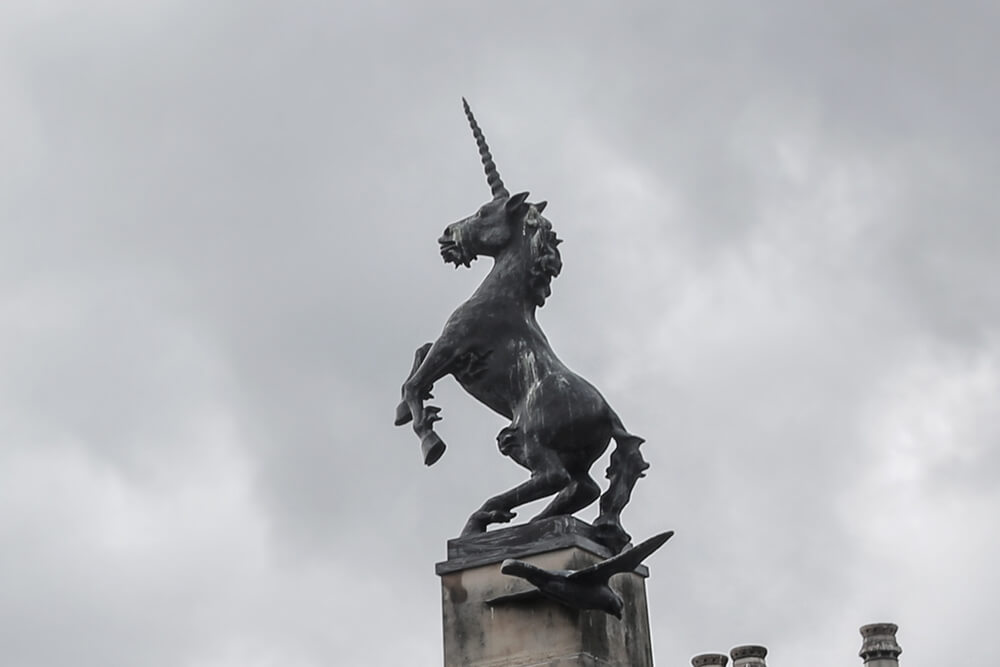
Many unicorns of varying sizes and shapes can be seen while wandering about Edinburgh. A good one can be found on a heraldic shield outside the Palace of Holyroodhouse, another one can be found in the Royal Rooms at Edinburgh Castle, and numerous more can be found tucked away amid the Victorian woodcarvings in St. Giles’ Church, which is located close to Gladstone’s Land.
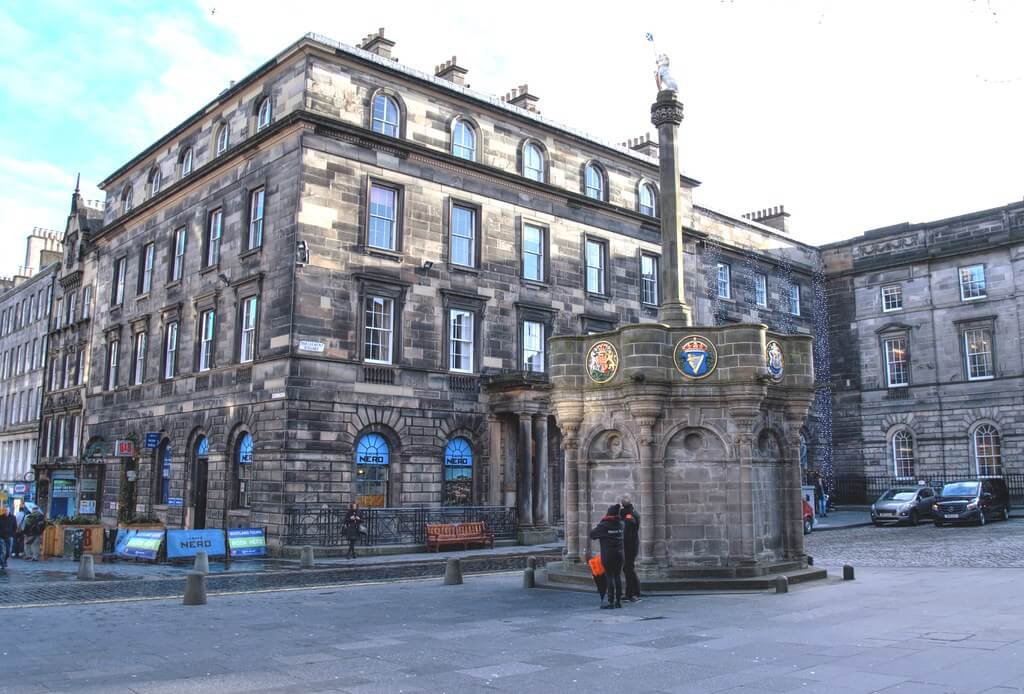
Look for a unicorn on top of the tower where you see a mercat cross, a Scottish market cross, and a long-established sign of trade and prosperity for many of our towns and communities. In towns and places, including Edinburgh, Culross, Prestonpans, Dunfermline, and Falkland, several examples spread across the nation, ranging from the simple to the elaborate.
4. Collections of unicorns in Scotland
A silver gilt cup with three oval plaques featuring lions, bears, and unicorns can be seen in the wine cellar at Brodick Castle. Another unicorn is represented in the House of Hanover’s royal coat of arms, prominently displayed on a gold military gorget (a type of metal collar) at Castle Fraser.
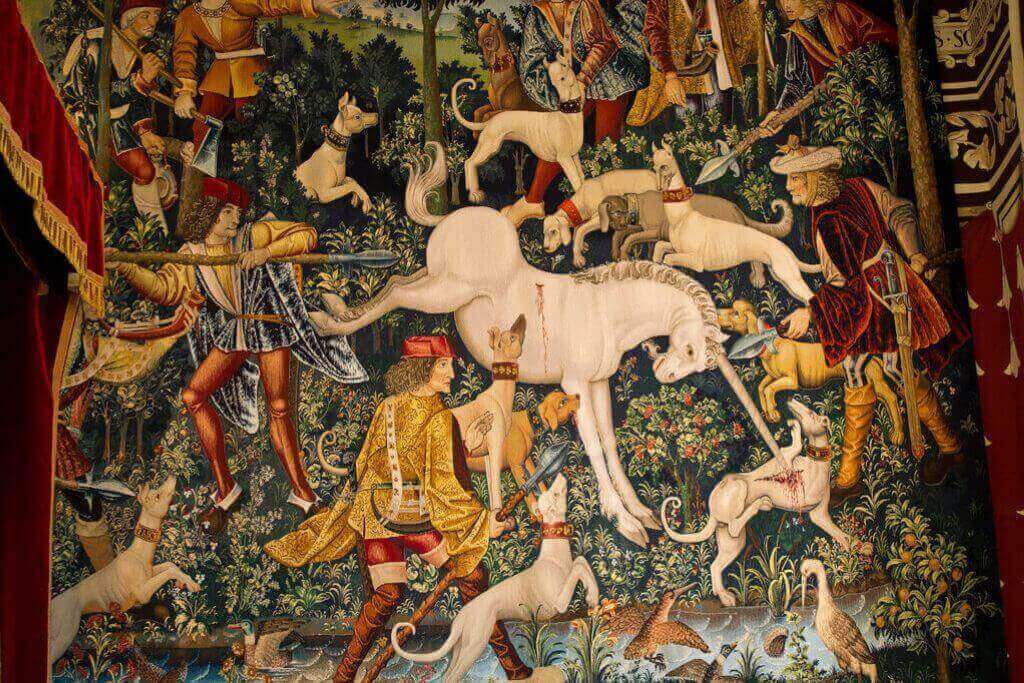
Unicorns are depicted on many pieces of furniture in our collections, including a Dutch oak cabinet with a grotesque unicorn depiction on one panel in the high hall of Crathes Castle. The top of a footman (or metal trivet) in the Georgian House’s parlor is decorated with a unicorn.
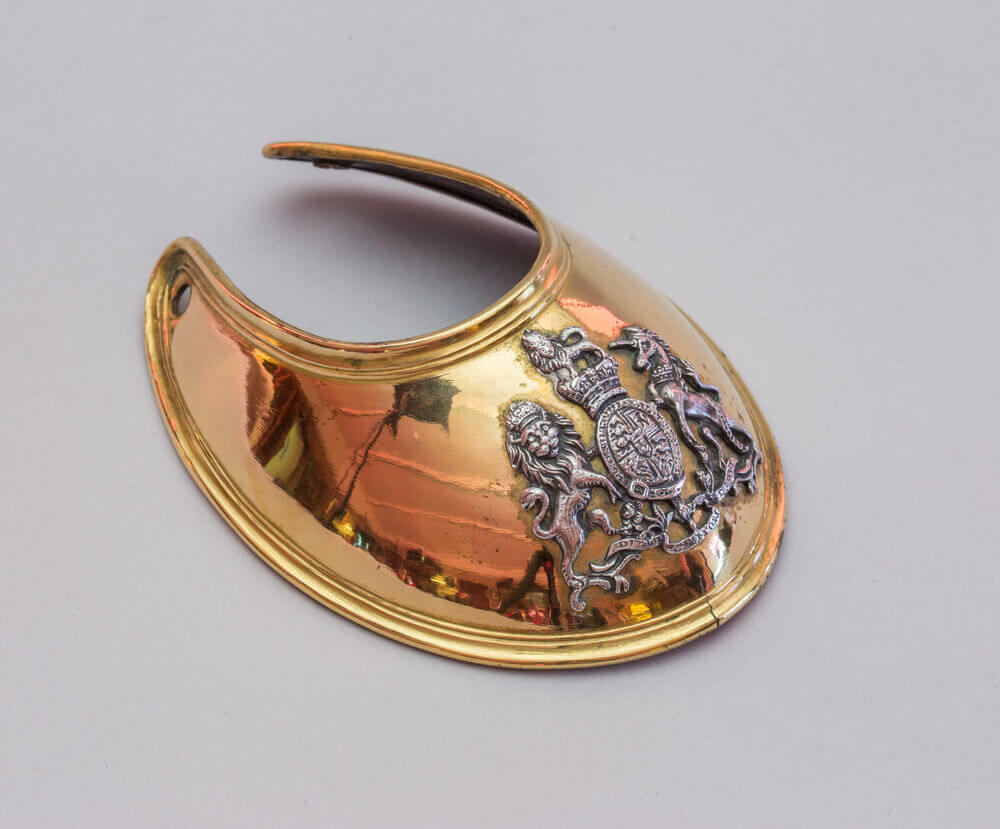
Last but not least, you may find some intriguing unicorn representations in the collections at Fyvie Castle, where a unicorn in mid-stride is the focal point of the design on top of a brass stand.
Falkland Palace features Mary, Queen of Scots’ coat of arms painted in a framed panel, featuring two unicorns with saltires. Culross Palace is home to an alms plate with a unicorn beneath a tree at its center.
